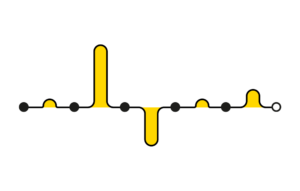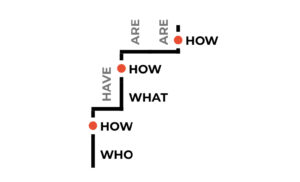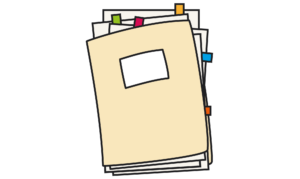Over the last couple of months Dave Hora and I have been discussing how you might create a conceptual view of research interviews for the purpose of teaching, improving, and reflecting on interview approaches. We’re sharing our in-progress thinking in two companion blogposts, experimenting with two ways of looking at interviews: organically (over on Dave’s blog) and systematically (below).
Interviews as collaborative explorations
An interviewer’s aim is to explore the terrain inside a participant’s head: to elicit and understand rich perspectives. The interviewer will have some sense of specific areas they want to visit. In turn, the participant may want to show the interviewer around some specific parts of the terrain too. This collaborative journey can become particularly fruitful if the interviewer and interviewee can establish a dynamic that works for them both in terms of itinerary and pace. In ethnographic interviews this may mean the participant is leading the itinerary and pace more, while in more traditional interviews the interviewer may influence the course of the conversation more.
Questions as navigational devices
In an interview each question or statement made by the interviewer acts as a navigational device: the interviewer essentially points in a direction and asks the participant to guide them there.
Questions can be used to move in three directions:
- To move to another topic
- To shift the experiential focus within the same topic
- To adjust the level of depth within the same topic
Let’s go through some examples (mis)using the notation of the Munsell colour system:
Moving to another topic
Switching topics is perhaps the most obvious direction, though there are many ways to go about it. Experienced interviewers are often able to transition to a new topic without interrupting the flow of the conversation – for example by getting the participant to guide to conversation to the new topic (“you mentioned X, what other activities do you do on the weekend?”).
Example of moving to another topic: from ‘can you tell me which song you last listened to?’ to ‘can you tell me which film you last watched?’.
Shifting experiential focus
Within each topic, the interviewer can focus on different facets of the experience. You could use different descriptions for these facets, but to keep it simple let's stick to:
- Thinking - e.g. their mental models, beliefs
- Feeling - e.g. their emotions
- Saying - e.g. their attitude, how they express themselves
- Doing - e.g. their behaviour (that is, in the context of an interview, how they talk about their behaviour)
Example of shifting experiential focus: from ‘how often do you listen to music?’ (doing) to ‘how does music make you feel?’ (feeling).
Adjusting depth
Finally, questions can also be used to increase or decrease the level of depth within a conversation about a topic – thereby adjusting the level of richness or detail. An interview typically increases in topic depth over time, though it can be necessary to capture information of lower depth after the participant has already spoken in-depth about a topic (e.g. 'when did you first experience this?' after a detailed account about an experience).
Example of increasing depth: from ‘how does listening to music make you feel?’ to ‘can you tell me about a song that evokes strong memories for you?’.
Responses as routes
Now just because an interviewer asks a participant to go somewhere doesn't mean they will. If we see the interview as a collaborative journey, the interviewer is attempting to navigate, but the participant determines the route through their responses.
A participant can have many reasons to take the conversation in a different direction. There could be a misunderstanding about a question, a participant might feel discomfort around a specific topic, or perhaps the participant is attempting to show the interviewer a (to them) more interesting part of the terrain. Regardless, the question and the response may not always move in the same directions during an interview, so we'll differentiate them by colouring in the areas a participant covered, and leaving blank the areas the interviewer tried to navigate to unsuccessfully:
The shape of an interview
By putting together the elements discussed above, we can create a three-dimensional view of an interview which describes the topics, experiential foci, and levels of depth that were covered:
Within an interview this makes it possible to see what has been covered. Across multiple interviews it makes it possible to compare patterns. Before we dig into synthesis, however, let's reflect on the pros and cons of this notation.
Limitations
I like how this model emphasises that interviews consist of collaboratively navigating a three-dimensional space. Both the interviewer and the participant influence how different topics are explored, consciously or subconsciously adjusting the topic, focus, and depth levers.
My previous attempts at visualising interview structures and sequences of interview questions relied fully on interview data: scripts and transcripts. This conceptual model is instead more abstract. Creating a visual representation per interview would rely on the reflections of the interviewer. But is what the interviewer heard always the same as what the participant intended to convey? Unlikely.
An article on Munsell's colour system in Public Domain Review concludes:
Munsell’s chromatic snobbery exposes the main limitation of his and other attempts at color systematization, for perhaps more fundamentally than any other attribute of Nature, color will ever be a matter of 'each to his own', rather than the province of scientific certainty."
While colours and interviews are wildly different things, their systematisation may be equally ambitious?
Dave Hora: I love the focus on the question as a mechanism of navigation. I have been thinking more about the nature of that space we’re exploring, and had not looked squarely at the finite set of “moves” a question could offer. Topic, Experiential Focus, and Depth seem to cover most of it, except for the purely interpersonal.
One thing we haven’t included in our pieces is a notion of rapport, which goes beyond questions into context-setting and prompts. I wrote about getting beneath generality into the more concrete, akin to your notion of depth. But neither of us have shown how some questions and prompts exist to clarify the interview’s intent, build trust, and reinforce the interviewer’s nonjudgmental stance.
At first, it threw me for a loop that depth is not the Z-axis in your model: and it makes sense when we try to capture all of an interview in one systematic view. I think, if each topic or subject line was its own “stack” with a corresponding depth/height, we may find an interesting way to reconcile these two views.
Read Dave's blogpost comparing interviews to anthills.


